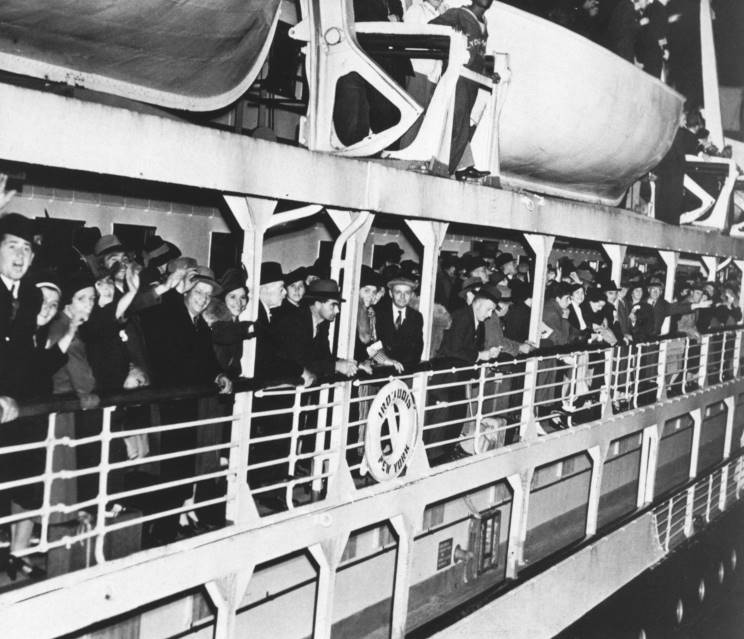|
On October 5, 1939 it was announced by the White House that a message from
Großadmiral Erich Raeder had been received through the United States Naval Attaché Commander A. E. Schrader in Berlin warning the U.S. government that the refugee ship Iroquois was going to be sunk as it approached the U.S. coast. The message stated that she would be sunk in "repetition of the circumstances of the Athenia sinking". (Athenia was the first merchant ship sunk in World War II) It was also claimed by the Germans that she (Athenia) had been sunk by Churchill and the British to sour public opinion toward the Reich, a truly incredible display of propaganda to deflect the truth that she had been sunk by a U-boat. While some could not understand why Raeder would alert the U.S. to the possible attack, the message was probably designed to imply that the British, probably Churchill who was a favorite target of Göbbels and the Nazi propaganda machine, would stage the sinking and blame the Germans in an attempt to draw the U.S.A. into the war on the British side. And perhaps to give themselves some cover in the event that a U-boat would sink the ship and of course to continue to propagate the lie about the Athenia. What ever the meaning the release of the message caused great anxiety for the fate of the ship. Iroquois was not a trans-Atlantic liner, but was a ship used along the U.S. coast. However she had been chartered by the U.S. to evacuate Americans who were wanting to escape Europe and England after the outbreak of war. On board were almost 600 passengers and 211 crew. As the public followed the story in the press, the passengers on Iroquois were unaware of the headlines their voyage was generating back home, but they were aware that something was wrong. The captain, E. A. Chelton, informed the crew of the threat to his ship and the passengers were also told a threat had been made, but the nature of it was not revealed until they reached New York. Chelton had his ship searched for hidden explosives in every possible place, including the luggage. Passengers reported that they were "forced" into the hold and made to identify their luggage and if they were unable to do so it would be forced open, the threat was taken seriously by Chelton and his crew. A spokesman for the President however told the public that the White House "did not place any great faith in the German report" and to prove that Roosevelt and his administration did not believe the threat to be serious several destroyers and a Coast Guard cutter were sent to intercept Iroquois and escort her into port. Apparently the passengers had little to fear from a hidden bomb or even a German submarine, but at mid ocean the weather got bad and for two days the 6,000 ton ship was tossed around like a toy causing dozens of injuries and hundreds of people to become violently seasick. Iroquois left Cobh, Ireland on Oct. 3 and arrived to a crowd of over two thousand cheering people at New York on Oct. 11 having suffered no incident, but the voyage gave the passengers a story of a storm and rumors of sabotage to tell their grandchildren. |
© 2011 Michael W. Pocock MaritimeQuest.com |
 |
Passengers line the rails as Iroquois arrives at New York Oct. 11. 1939. |
2007 Daily Event |
||
2008 Daily Event |
||